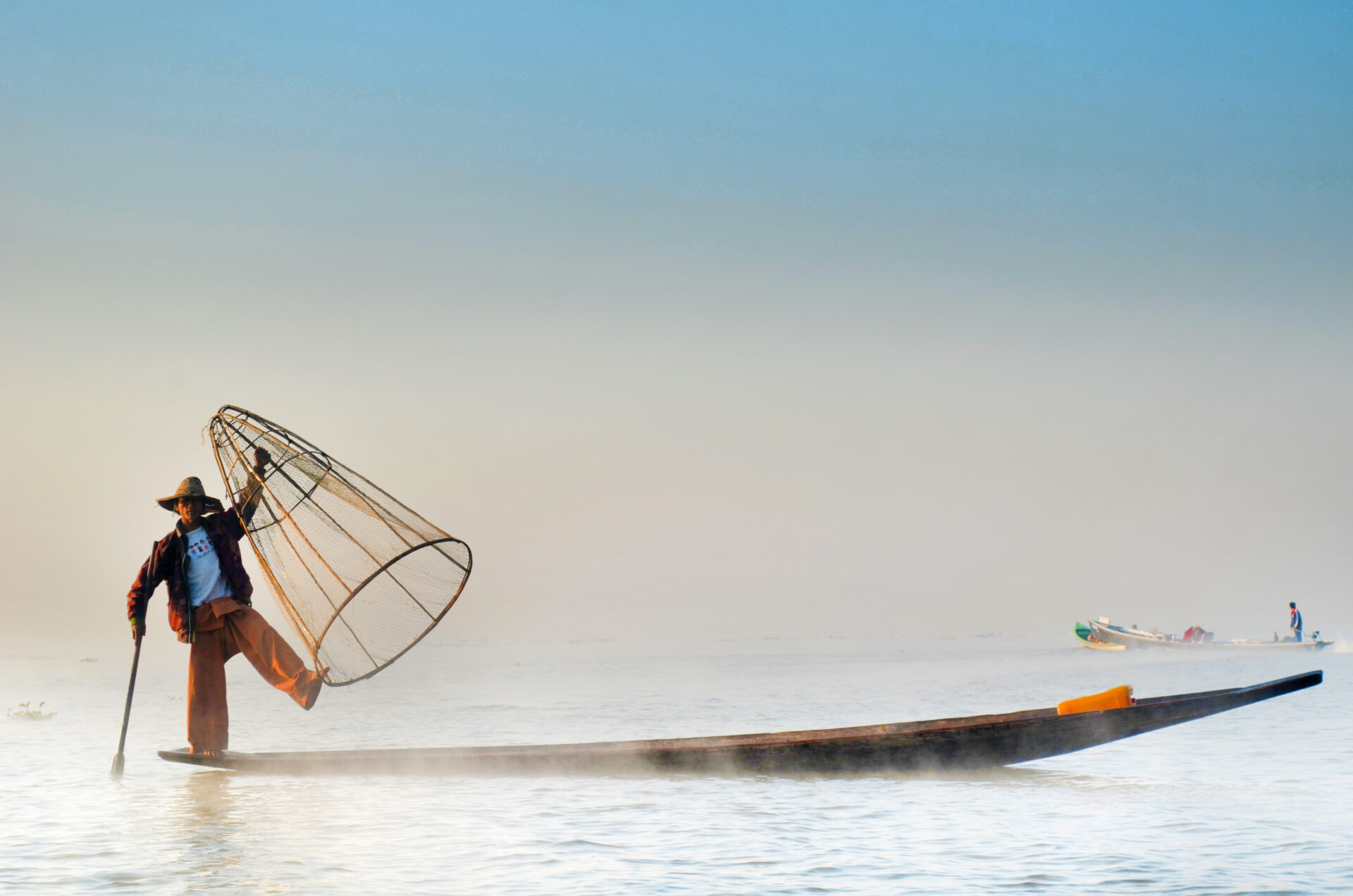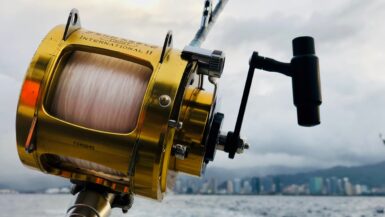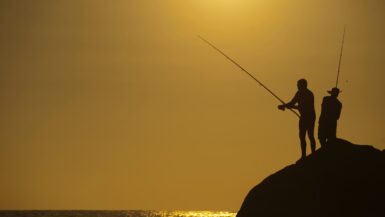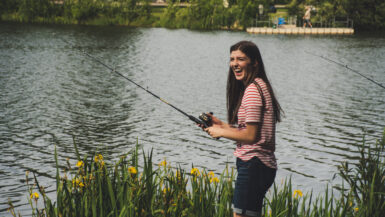If you’re an avid fisherman looking to try your hand at some freshwater carp fishing, a small pond may be the perfect place to start. Carp are notoriously tricky to catch, but with the right techniques and strategies, it’s possible to reel in a successful catch. In this article, we will look at some of the best techniques to make the most of your carp fishing experience in your local small pond.
Types of Carp Found in Small Ponds
The varieties of carp found in small ponds depend mostly on the region and type of water body. Commonly, carp can be found in ponds and small lakes that have slow moving or still water, making for perfect conditions for the fish to breed and live. Examples of the carp varieties commonly found in ponds include the common carp, mirror carp, crucian carp and grass carp.
Common Carp
The common carp is widely recognized and common in many small ponds and lakes. It is easily identified by its large scales, golden-bronze color and darker back and tail. The common carp is a bottom feeder and can grow to be a large size. It is one of the most sought-after varieties of carp amongst anglers, as it is known to be more aggressive and easier to catch.
Mirror Carp
The mirror carp is a scaled variety of common carp. This fish is easily identifiable by its large scales and by its color, which is often light golden or silvery in hue. The mirror carp is known to be a bit less aggressive when it comes to biting a hook and tends to take longer to catch compared to the common carp.
Crucian Carp
The crucian carp is one of the smallest varieties of carp. This fish is easily identifiable by its small, round scales that are particularly noticeable around the lateral line of the fish. This species of carp can typically grow to be around 12 inches in size, although they are very rarely found over 10 inches.
Grass Carp
The grass carp is one of the largest varieties of carp and can reach lengths of up to 24 inches. This fish is identifiable by its uniform grayish-brown color and its long, V-shaped head. The grass carp is a vegetarian-based feeder that prefers to feed on vegetation and aquatic plants, making it a fairly difficult fish to catch.
Knowing which carp varieties are found in small ponds can help you select the right techniques for carp fishing. Different carp varieties require different approaches when it comes to bait, lures and other techniques. With the right techniques, you can increase your chances of reeling in a large carp from a small pond.
Bait Selection
Carp fishing is a great way to enjoy some outdoor recreation while catching some tasty fish. When fishing in small ponds, there are a few techniques that can be useful for catching carp. One of the most important techniques is selecting the right bait for the job.
The Benefits of Carp Fishing
Carp fishing can be a very rewarding experience, with the potential for some big fish. Carp can be found in both still waters, such as ponds, and running waters, so the possibilities for catching them are vast. Carp have a wide range of diets, which makes them an ideal target for anglers.
Choosing the Right Bait for Carp Fishing
Choosing the right bait when fishing for carp in small ponds is essential. There are many different types of bait that can be used, but it is important to consider the type of fish in the pond. For example, if there are smaller fish in the pond, such as minnows or chub, then bait such as corn and maggots may be more suitable. If there are larger fish, then baits such as dough balls and sweetcorn may be better. It is also important to consider the type of water, as a bait that may work in a slow-moving river may not work in a still pond.
Using Various Types of Bait
When fishing for carp in small ponds, it is also important to consider using multiple types of baits in order to see which works best. For example, using a combination of different boilies and sweetcorn can help to increase the chance of catching a carp. Additionally, using smaller baits such as maggots and worms can be a good way of catching carp if they are not feeding on the larger baits.
Considerations When Using Bait
It is vital to ensure that the bait is presented correctly in order to maximise the chances of catching carp. It is important to ensure that the bait is fresh and of good quality, as this will make it more attractive to the carp. Additionally, the bait should be presented in small, bite-sized pieces, as carp will often take several bites before swallowing the bait. Care should also be taken to ensure that the bait is placed in an area where it will be accessible to carp.
By following these simple tips for bait selection, carp fishing in small ponds can be a rewarding experience. By selecting the correct bait and presenting it correctly, the chances of catching carp can be greatly improved.
Location of the Fish
Catching carp in small ponds requires the angler to identify areas with concentrations of carp. Carp prefer still or slow-moving, shallow water. They are most abundant in areas with plenty of oxygen and aquatic vegetation. Additionally, carp may feed near shorelines and structures such as fallen trees, islands, or submerged structures such as logs, stumps, trees, or rock piles. Anglers should look for signs that indicate carp are present such as dimples on the water surface, swimming near the edge of the weed beds, or feeding in shallow water.
Locating the Best Fishing Spots
Once the angler identifies carp in a particular area, the next step is to locate the best spots to cast. Carp may feed actively along the edges of a feature or swim around the edges. Anglers should also look for concentrations of carp in deeper water or dark areas in a pond. Areas of shadow or structure such as fallen trees or submerged vegetation can be ideal places to target carp. Additionally, anglers should identify feeding areas that are close to the shore where they can cast easily.
Using the Right Tackle
The most important factor for catching carp in a small pond is the proper use of tackle. Anglers should equip themselves with a rod and reel that have line capacity of at least 10 pounds. Monofilament line is better for casting and offering bait, while a heavier fluorocarbon line is ideal for holding bottom. When fishing with light tackle, hooks sizes of #10 to #12 are best as carp have small mouths. Anglers should also use small baits to match the size of the fish.
Effective Methods for Carp Fishing in Small Ponds
Anglers should equip themselves with a range of baits, depending on the season. In the spring and early summer, particles such as corn, wheat, and oats are effective. During mid-summer and fall, anglers should use boilies, paste, and pellet baits. Using multiple baits in a PVA bag or a spreader is also a good technique to attract carp. Additionally, anglers should also try to fish different depths, as carp may be found in water as shallow as 6 inches or as deep as 20 feet. By combining the right tackle, bait and location, anglers can effectively target carp in small ponds.
Tactics for Landing the Fish
Carp fishing in small ponds requires the use of the right baits to attract these fish. Using sweetcorn, bread and maggots are the most common baits for carp fishing in smaller ponds. Boilies can also be used, but it is important to note that small carp are less likely to take a boilie bait and they tend to prefer the smaller bait options. To get the best results when fishing for carp in small ponds, it is important to use the right bait and to also vary the baits between sessions.
Using the Right Tackle for Carp in Small Ponds
Equally as important as using the right bait, is using the right tackle when fishing for carp in small ponds. Rods and reels made for heavier carp fishing may not be suitable for smaller ponds as they can prove too powerful for the smaller fish. For this reason, lighter rods and reels should be used that are better suited for small carp fishing. Knowing the size of the carp in the pond is also important as this will help in deciding what kind of tackle should be used.
The Right Tactics for Landing the Fish
Once the carp have taken the bait and are hooked, anglers should use the correct tactics when landing the fish. This is important as it can determine the success of the carp fishing session. After hooking the carp, it is important to keep the line as tight as possible and to take the fish in slowly. Do not rush the carp and try to bring it in too quickly as this can cause damage to the carp. Establishing a steady, slow pull will help in landing the carp more easily and with less damage.
Practicing Good Carp Handling
Once the carp has been landed, it is important to adhere to proper carp handling techniques. This includes not touching the carp with bare hands and also not taking it out of the water. If necessary, carp must be supported with a wet cloth or with a carp cradle and it is also important to keep the fish in the water as much as possible. Keeping carp out of the water for too long can lead to stress and potential damage. When releasing the carp, make sure that it is returned to the water as soon as possible.
Fishing Equipment Needed
Carp fishing requires a variety of specialized equipment to be successful. The most important pieces of fishing equipment for carp fishing in small ponds include a sturdy fishing rod, a good quality fishing line, a variety of hooks, carp baits and a net.
Rod and Reel
When selecting a rod, it’s important to select one that is strong and stiff enough to handle the hard fighting carp. The size and power rating of the rod should be based on the size of the carp you are targeting. Reels should be matched to the size and strength of the rod and should be capable of holding enough line for the fishing conditions.
Fishing Line
As carp can easily spook in small ponds, the fishing line should be as thin as possible to reduce visibility. A good quality line that is less visible, such as monofilament or fluorocarbon, is best. This type of line is also more abrasion resistant, which is important when fighting carp in tight waters.
Hooks
When carp fishing, it’s important to use strong and sharp hooks. Carp have thick lips and can be difficult to hook, so using a strong and sharp hook is essential. When selecting hooks, it’s important to use a size that matches the size of the bait you are using.
Carp Baits
Carp baits come in a variety of different forms and can be purchased at most tackle shops. Popular baits for carp fishing in small ponds include pellets, boilies, corn, maggots, worms, and various other baits. It’s important to choose a bait that will attract the carp in the particular pond you are fishing.
Nets
When carp fishing in small ponds, it’s important to have a quality net to help bring the carp to shore. A net that is large enough to contain a carp, but also small enough to maneuver in tight spots, is essential. A strong, lightweight net is also important to ensure the carp can be brought to shore safely and without causing any damage.
Fishing Accessories
Finally, there are a variety of accessories that can help make carp fishing more successful. Accessories such as line clips, swivels, sinkers, and float rigs can all play an important role in improving the success rate of carp fishing in small ponds. These accessories should be chosen based on the type of fishing you are doing and the types of carp you are targeting.
Successful Carp Fishing Tips
Small ponds can be a great place to catch carp and they are usually stuffed with plenty of carp. To give you the best chance of catching a carp from a small pond, here are a few tips to get you started. Firstly, you should use a fishing rod with a light line and small hook, as carp tend to be spooked off by heavier tackle. Secondly, try to choose a bait which the carp will be more likely to take, such as sweetcorn or bread crust. Lastly, if you want to ensure your success, try to find a spot where carp will more likely be, such as near weed beds, and adjust your approach accordingly. Following these steps will increase your chances of catching carp from small ponds and you can start to enjoy the sport.





Leave a reply